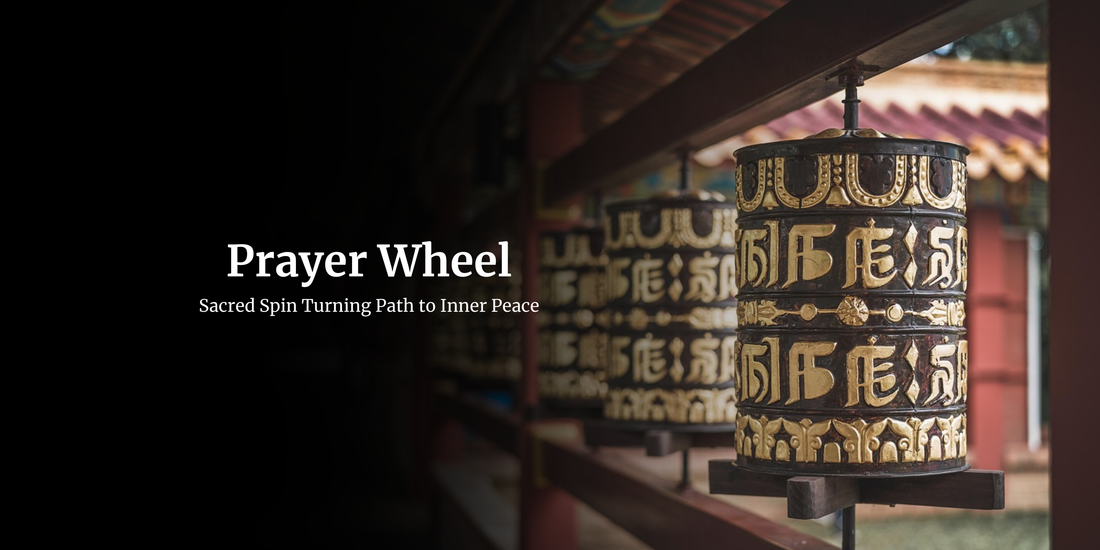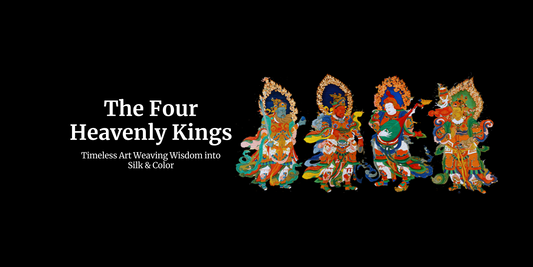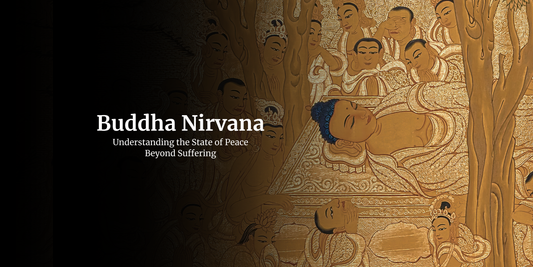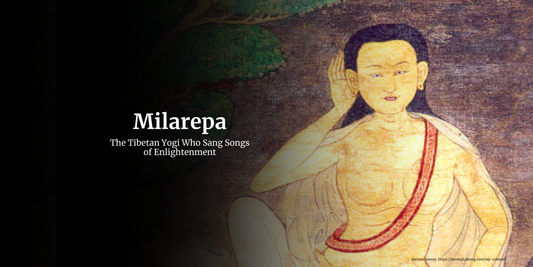- Buddhas Art of Healing
- Buddhism Blog | Teachings, Philosophy & Mindful Living
- Prayer Wheel: Sacred Spin Turning Path to Inner Peace

Prayer Wheel: Sacred Spin Turning Path to Inner Peace
Have you ever seen a photo of a vibrant Tibetan temple and spotted a beautiful, ornate cylinder, often made of metal, wood, or even leather, with a handle? Maybe you’ve seen a devoted person gently spinning it. It’s profound spiritual technology known as a prayer wheel.
Far more than a simple ritual object, the Tibetan prayer wheel is a cornerstone of Himalayan Buddhist practice.
Let's dive into the captivating world of prayer wheels and discover how a simple spin is believed to generate immense compassion and wisdom.
What is a prayer wheel?
A prayer wheel is a cylindrical device, traditionally containing a tightly wound scroll printed with millions of powerful sacred mantras.
The most common and important mantra is "Om Mani Padme Hum," the six-syllable mantra of Avalokiteshvara, the Bodhisattva of compassion.
The principle is beautifully simple yet deeply symbolic: the motion of spinning the wheel is considered the spiritual equivalent of reciting the enclosed prayers and mantras aloud.

Each rotation sends these benevolent vibrations in the universe, cultivating peace, compassion, and knowledge for the benefit of all emotional beings. It is a form of meditation in motion that allows one to accumulate merit (positive spiritual energy) and purify negative karma through a constant, arbitrary act.
The Heart of the Wheel: What's Inside and How It Works
So, what makes these Buddhist prayer wheels so special? Magic is in the details.
-
Sacred Scroll: Inside the cylinder, a long scroll is carefully printed with a chosen mantra, repeated thousands, even millions, of times.
-
Central Spindle: The scroll is wrapped around a central spindle, which represents the central pillar of the universe in “axis mundi,” or the Buddhist universe—a relationship between the worldly and the divine.
- Spin direction: Prayer wheels are always spun clockwise. This direction reflects the movement of the Sun and the circumference (holy walk) of the stupas and temples. It is believed to generate positive energy and align the practitioners with the harmonious flow of the universe.
More Than Just Hand-Held: The Many Forms of Prayer Wheels
When we think of Tibetan prayer wheels, we often picture the portable, hand-held version. But the tradition extends far beyond:

-
Mani Wheels (Hand-held): The classic, personal wheel. Practitioners spin them throughout the day—while walking, chanting, or even during breaks—keeping their mind focused on the Dharma.
-
Large Fixed Wheels: Lining the courtyards of monasteries and temple pathways, these large, often beautifully decorated cylinders are spun by pilgrims as they pass by. It’s common to see a row of people gently turning each one with their hand.
-
Water Wheels: Ingeniously, some monasteries channel flowing water to turn massive prayer wheels continuously. This harnesses the natural element to perpetually send prayers into the world, 24/7, a perfect example of living in harmony with nature.
-
Fire Wheels: Powered by the heat of butter lamps or candles, these are less common but represent the element of fire in the prayerful act.
- Electric Prayer Wheels: A modern adaptation; you can find wheels powered by electricity, solar panels, or even wind. The intent remains the same: to keep the prayers spinning for the benefit of all.
Why Spin? The Deeper Meaning and Benefits
You might wonder, "Is it 'cheating' to spin a wheel instead of reciting the prayers?" From a Buddhist perspective, absolutely not. The practice is rooted in profound intent.
-
Cultivating Compassion: The primary mantra, "Om Mani Padme Hum," is a call to compassion. Spinning the wheel is a practice for all beings to generate that compassion.
-
Mindfulness in Motion: Repetitive, soft motion helps focus the mind, prevents distraction, and anchors the practitioner in the present moment.
-
Purification: To purify negative karma and pacify afflictive emotions like anger, attachment, and ignorance.
- Merit Accumulation: In Buddhist philosophy, positive actions (like prayer) generate merit, which contributes to progress on the path to enlightenment. The prayer wheel allows for the accumulation of vast merit in an accessible way.
Experiencing Prayer Wheels Tibet and Beyond
If you ever have the privilege to visit a Tibetan community or a Dharma center, you’ll likely encounter the Buddhist prayer wheel. If you do, here’s how to engage with respect:
-
Always spin clockwise.
-
Use your right hand, as the left hand is traditionally considered impure in many Asian cultures.
-
Be mindful and present. You don't have to be a Buddhist to appreciate the tranquility of the act. Focus on a positive intention—for peace, for loved ones, for the world.
- Walk around stupas and temples clockwise, and spin the wheels as you go.

1. What is a prayer wheel used for?
A prayer wheel is used as a method to mechanically recite mantras and prayers. By spinning it clockwise, one can accumulate merit, purify negative karma, and send prayers for the benefit of all beings. It's a tool for meditation and mindful practice.
2. Do you have to be Buddhist to use a prayer wheel?
Not at all. Anyone can use a prayer wheel. It is a symbol of peace and a tool for mindfulness.
3. What is written on the scroll inside?
Mantras are written on the scroll inside. The most common mantra is “Om Mani Padme Hum.” Likewise, other mantras can also be found.
4. How many times should you spin a prayer wheel?
There is no definite rule. Some practitioners aim for a specific, auspicious number of rotations (like 108, or multiples thereof), but the common intention is to spin it with a concentrated and kind mind. The quality of the intention is considered more important than the number of spins.
The prayer wheel is a beautiful will to connect more with human desire, to cultivate inner peace, and to actively wish for the good of the whole world—a gentle spin at one time.
Explore our collection of authentic Tibetan Thangkas from the art of Buddha's Art of Healing. Each of our Thangkas has been prepared to inspire peace, clarity, and spiritual connection.
Follow us on Facebook and Instagram to get insights on Buddhism and be updated about Tibetan Buddhist festivals, special days, and more.



